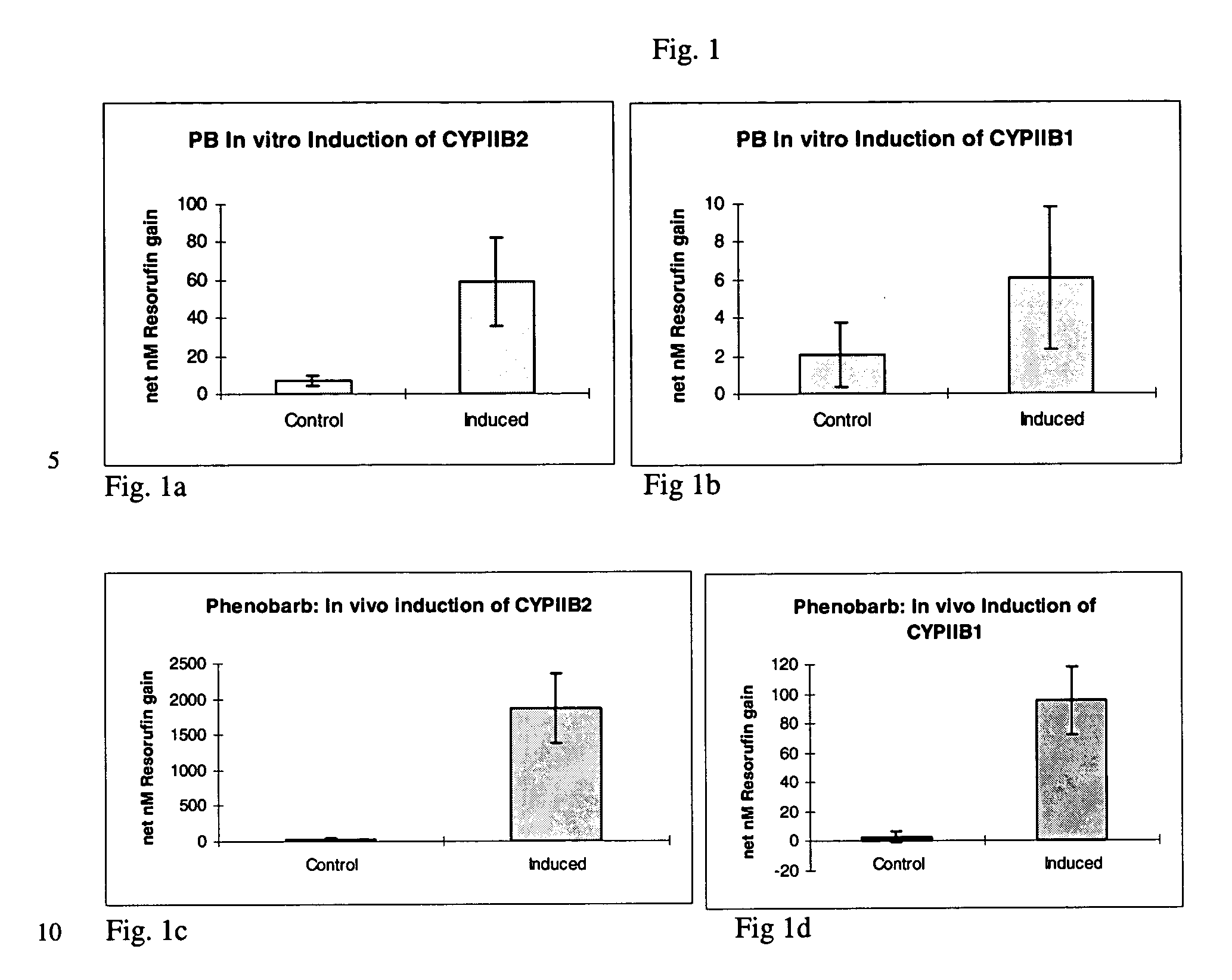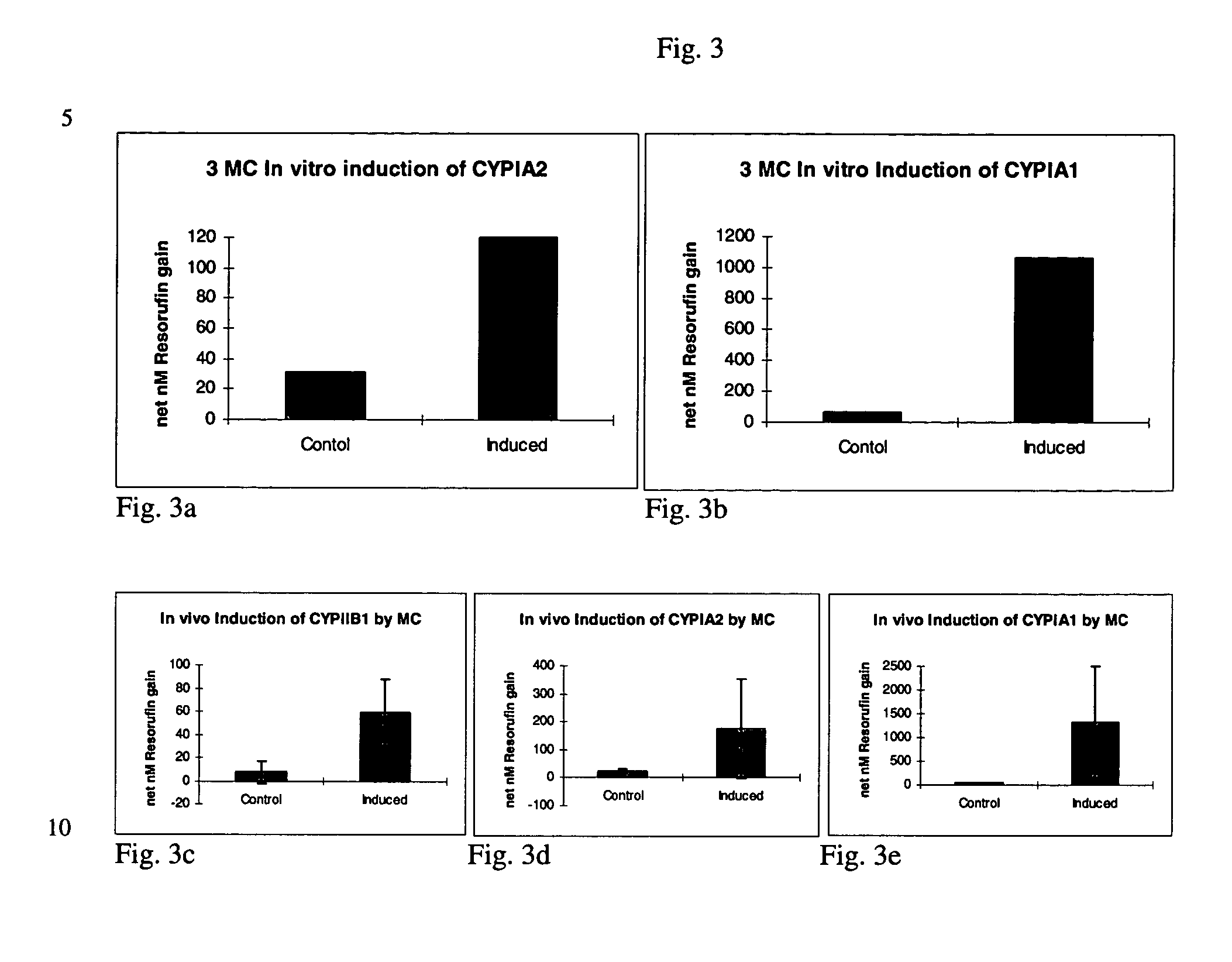In vivo induction for enhanced function of isolated hepatocytes
a technology of enhanced function and hepatocytes, applied in the field of cell culture and medical biotechnology, can solve the problems of many of these differentiated activities being transien
- Summary
- Abstract
- Description
- Claims
- Application Information
AI Technical Summary
Benefits of technology
Problems solved by technology
Method used
Image
Examples
example 1
In Vivo Induction and Isolation of Hepatocytes
[0032] A series of in vivo induction studies utilized various doses and injection regimes ranging from 40 to 80 mg / kg on days -4 to -1 with phenobarbital in PBS; 3-methlycholanthrene (in DMSO or benzene);or, .beta.-naphthoflavone (in DMSO) given at 5 to 15 mg / kg on days -3, -2 and / or -1 prior to surgical removal of the liver. A summary of various trials is presented in Table 2. Yorkshire / Hampshire crossbred pigs weighing 8.3 i 3.0 kg were obtained from E M Parsons (Hadley, Mass.). All injections of induction agents were administered into the peritoneal cavity.
2TABLE 2 In vivo Induction Agents, Dosages, and Frequency Dosage Dosing frequency Induction agent / (per kg donor (days prior to liver Trial Carrier agent bodyweight) procurement) Trial 1 Phenobarbital / PBS 80 mg / kg Days -3 and -2 Trial 2 Phenobarbital / PBS 40 mg / kg Days -3, -2 and -1 Trial 3 Phenobarbital / PBS and 40 mg / kg Days -3, -2 and -l .beta.-Naphthoflavone / 10 mg / kg Days -3, -2 ...
example 2
Cytochrome P450 Function Measured in Hepatocytes
[0037] The dealkylation of phenoxazone substrates has provided a powerful tool for investigating cytochrome P450 activities and isozyme profiles. Specifically, the dealkylation of the phenoxazone ethers ethoxyresorufin (EROD), methoxyresorufin (MROD), benzyloxyresorufin (BROD) and pentoxyresorufin (PROD) have allowed researchers to study the effects of induction agents on individual isozymes, namely, CYPIA1, CYPIA2, CYPIIB1 and CYPIIB2, respectively.
[0038] To measure increased isozyme activity in both in vivo and in vitro induced cultures compared to non-induced controls, both in vivo induced and in vitro induced cultures from Example 1 were incubated with EROD, MROD, PROD or BROD (Molecular Probes) at 5 .mu.M (in Williams' E media without serum and phenol red). Dicumarol (80 .mu.M, Sigma) was included in the incubation to limit cytosolic degradation of the resorufin end product. Samples were analyzed in a Turner 450 fluorometer at 540...
example 3
Lidocaine and Diazepam Clearance
[0043] Lidocaine (Paddock Laboratories Inc., Minneapolis, Minn.) clearance was assayed using a modification of the protocol of Nyberg et al. Pharmacokinetic analysis verifies P450 function in in vitro and in vivo application of a bioartificial liver, ASAIO, 39:M252-M256, 1993. Lidocaine (740 .mu.M) was added to the control, and both in vivo induced and in vitro induced cultures of Example 1 for the indicated times; media samples were then collected and frozen until extraction. Solid phase extraction was performed with Oasis cartridges (Waters Corp., Milford, Mass.) and a Waters extraction manifold as follows: Cartridges were primed with 99% MeOH 1% HCl and 0.5 M Borax. The sample was loaded onto the column, washed with 0.5 M Borax, eluted with MeOH / HCl and then evaporated and reconstituted with 250 .mu.l of mobile phase (85% 50 mM NH.sub.4HPO.sub.4+10 mM Hexanesulfonic Acid, pH 3.0, 15% Acetonitrile). The reverse phase HPLC was carried out with a flow...
PUM
| Property | Measurement | Unit |
|---|---|---|
| time | aaaaa | aaaaa |
| density | aaaaa | aaaaa |
| density | aaaaa | aaaaa |
Abstract
Description
Claims
Application Information
 Login to View More
Login to View More - R&D
- Intellectual Property
- Life Sciences
- Materials
- Tech Scout
- Unparalleled Data Quality
- Higher Quality Content
- 60% Fewer Hallucinations
Browse by: Latest US Patents, China's latest patents, Technical Efficacy Thesaurus, Application Domain, Technology Topic, Popular Technical Reports.
© 2025 PatSnap. All rights reserved.Legal|Privacy policy|Modern Slavery Act Transparency Statement|Sitemap|About US| Contact US: help@patsnap.com



